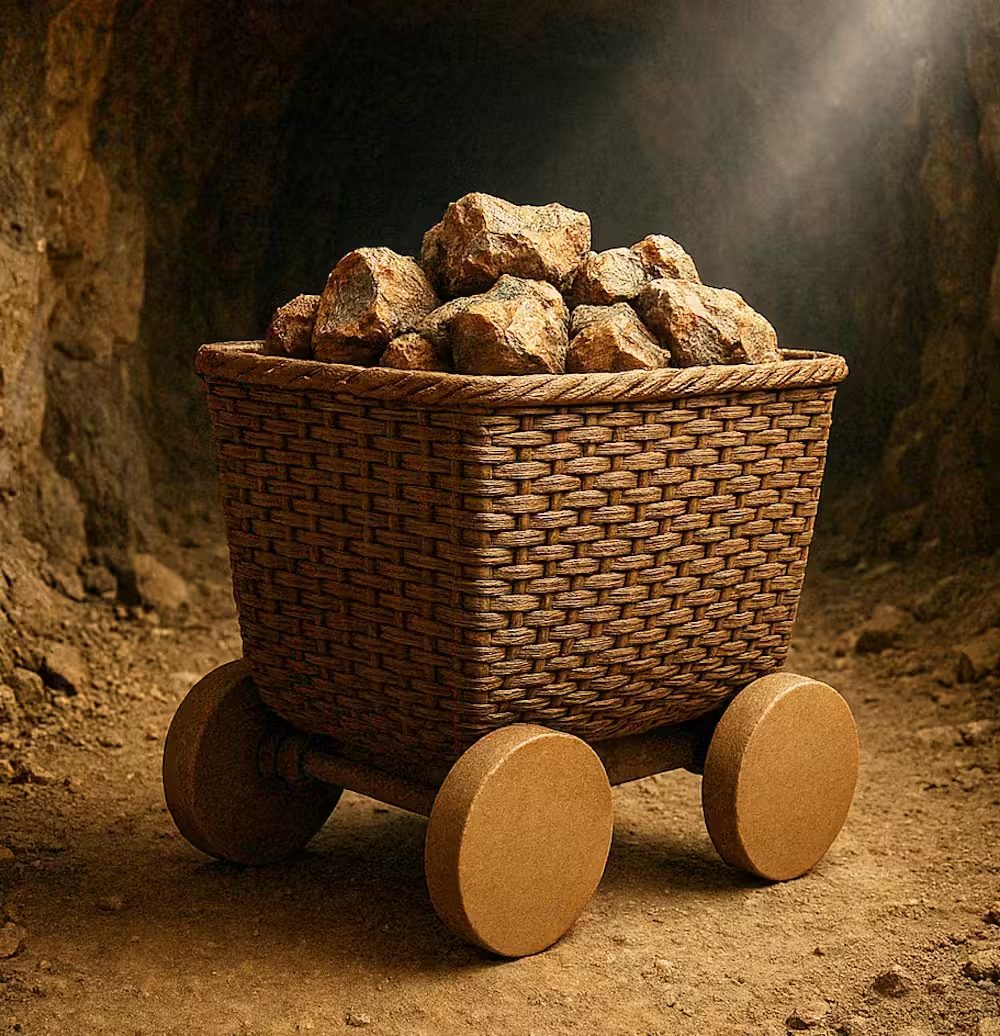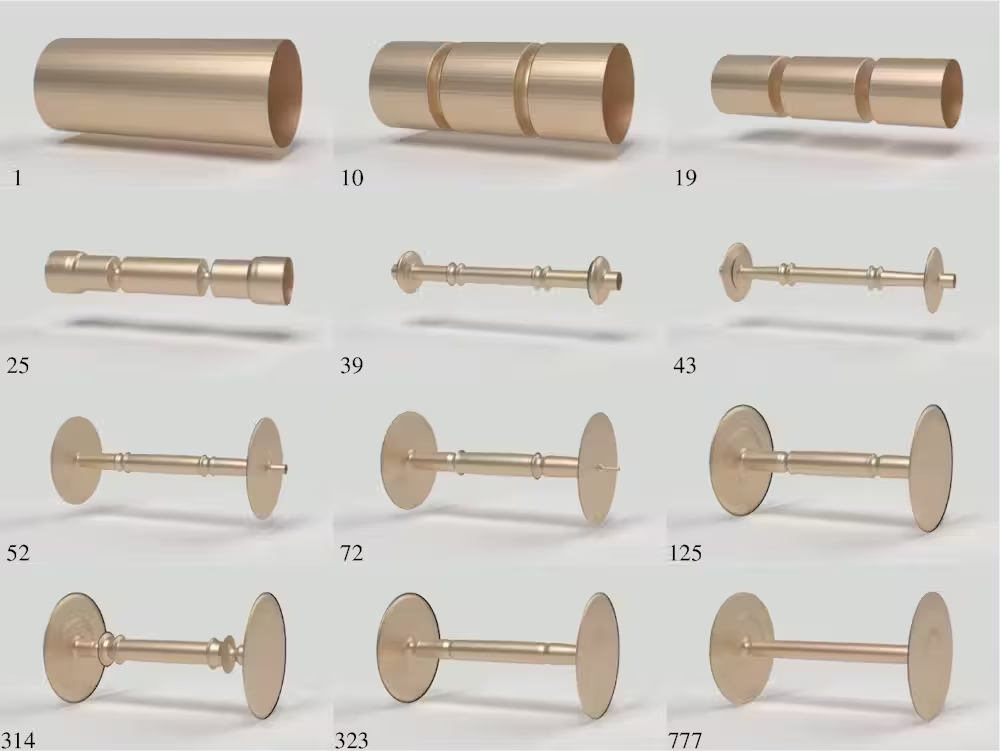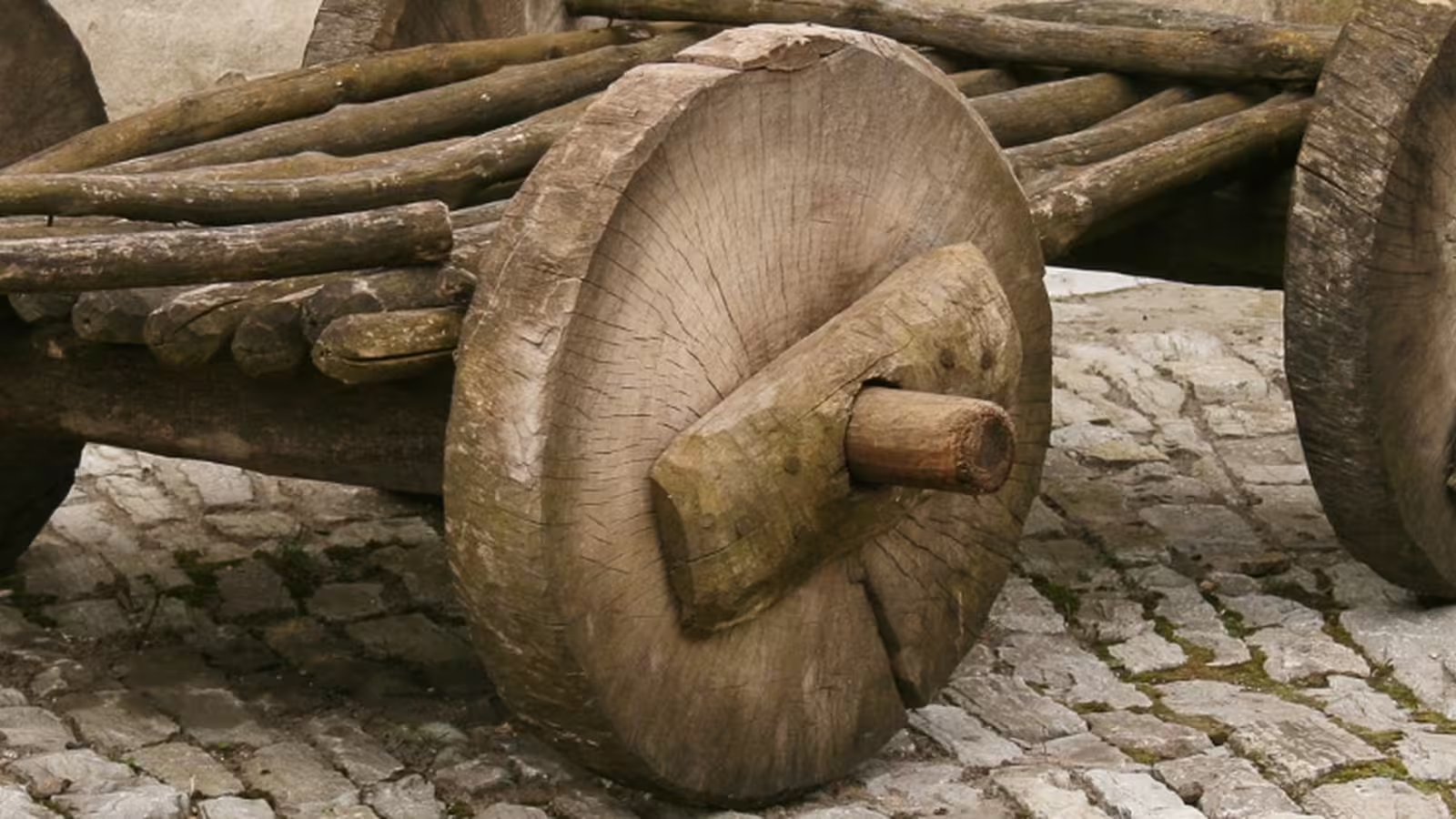5 Minutes
The Wheel’s Surprising Beginnings: A Practical Solution to an Ancient Problem
Imagine southeastern Europe nearly 6,000 years ago, deep in the barren tunnels of a copper mine. Day after day, laborers toiled under challenging conditions to extract the region’s coveted copper ore. The prevailing narrative of the wheel’s invention often conjures images of empires and grand civilizations, yet the true story may have roots in much humbler circumstances.
Recent archaeological and scientific findings suggest that one of humanity’s most transformative technologies—the wheel—was developed not in royal courts but in the physically demanding mines of the Carpathian Mountains, located in present-day Hungary. In this setting, necessity drove innovation, changing the course of history not just for a small mining community, but for all of civilization.
From Rollers to Wheels: New Theories Challenge Old Ideas
For centuries, the origins of the wheel have remained a subject of scholarly debate. Traditional theories posited that the wheel evolved naturally from the use of simple wooden rollers—a technique requiring flat and sturdy pathways. But these explanations faced contradictions. In the challenging terrain of the ancient world, rollers were cumbersome: they needed constant repositioning and performed poorly on uneven surfaces.
However, a breakthrough theory published in 2015 offers a compelling narrative. Archaeologists have unearthed more than 150 miniature clay wagons in the Carpathian region, each decorated with patterns reminiscent of the basketry local miners used. Through radiocarbon dating, these artifacts have been identified as the oldest known depictions of wheeled transport. This evidence has led researchers to hypothesize that the wheel was not a byproduct of agricultural or urban advance, but rather a mining innovation intended to streamline the arduous transport of heavy copper ore.

Rethinking Wheel Innovation Through Mining Technology
The mining environment provided unique engineering challenges and opportunities. In the confines of man-made tunnels, rollers could be used more efficiently, sidestepping some limitations of open terrain. This context likely sparked the creative leap from rollers to true wheels.
The Engineering Journey: How Mechanical Advantage Shaped the First Wheels
Transitioning from rollers to wheels was not a single eureka moment, but rather the result of a succession of small, practical improvements. The first critical step was modifying carts to hold rollers in place using semicircular sockets, so the roller would move with the cart, alleviating the exhausting need to reposition the rollers continually—especially difficult in cramped mine tunnels.
Yet the innovation did not end with better cart design. Over time, physical wear and constant friction at the roller-socket junction likely caused the rollers to narrow at the center, or miners deliberately thinned the rollers to help carts clear minor ground obstacles. What began as a natural or accidental narrowing ultimately granted the operators a mechanical advantage, making it easier to push heavier loads with less effort.
Computer Modeling the Wheel’s Evolution
To understand this transformation, researchers used computer-aided design to simulate potential roller shapes, analyzing which designs provided the most mechanical advantage while maintaining structural integrity. The simulations mirrored historical evolution, demonstrating that gradual, minor changes could predictably lead from a bulky roller to the distinctive wheel-and-axle configuration. Each modification—whether intended or incidental—offered incremental benefits that miners would naturally favor, copying and perfecting the best-performing designs.
Eventually, these continuous refinements resulted in a structure consisting of a slender axle capped by wide discs—an early wheel. Remarkably, the wheel’s invention was less a singular breakthrough than a process of cumulative problem-solving, echoing the broader patterns seen in technological and biological evolution.

Impacts, Evolution, and a Full Circle in Engineering
While ancient Egypt and other early civilizations rose to iconic status with monumental architecture and social stratification, they did not initially adopt the wheel. This contrast underscores how technological breakthroughs can emerge from the most unexpected contexts, driven by immediate, pressing needs rather than theoretical knowledge or societal complexity.
The story of the wheel does not end in antiquity. Over 5,000 years after those pioneering Carpathian miners revolutionized transport, a new leap forward arrived in 19th-century Paris. There, the invention of the radial ball bearing—a ring of rotating spheres placed around an axle—transformed wheeled vehicles once again by drastically reducing friction. The irony is not lost: modern ball bearings operate on the same principle as ancient rollers, connecting the evolutionary arc between early mine carts and today’s high-precision transport systems.
The Continuing Journey of a Fundamental Technology
The wheel’s evolution remains ongoing, shaped by new scientific discoveries and engineering frontiers. Its application extends far beyond land transport, influencing technologies in robotics, aerospace engineering, and planetary exploration. On Mars, for instance, rovers depend on wheel designs honed over millennia to traverse alien landscapes.
Conclusion
The invention of the wheel, far from a straightforward story, represents a complex interplay of environment, necessity, and incremental innovation. Archaeological discoveries in ancient European mines offer a window into how ordinary workers sparked a technological revolution—one that would underpin everything from agriculture and industry to space exploration. As we continue to refine and reinvent the wheel for new challenges, its enduring legacy underscores a fundamental truth: even the most groundbreaking technologies can trace their origins back to unexpected, everyday problems—and the quiet ingenuity of those determined to solve them.
Source: theconversation



Comments